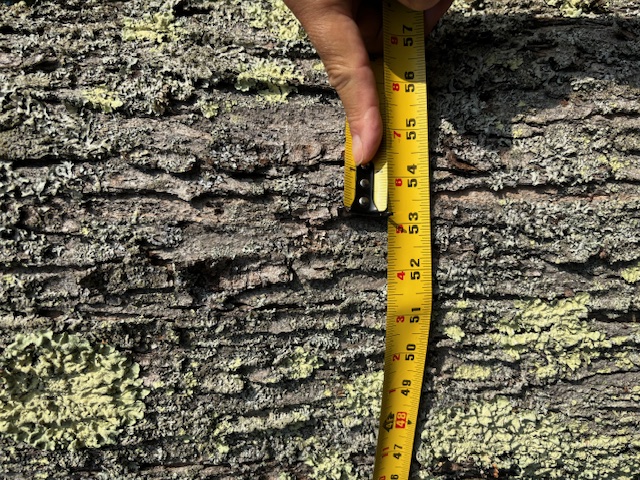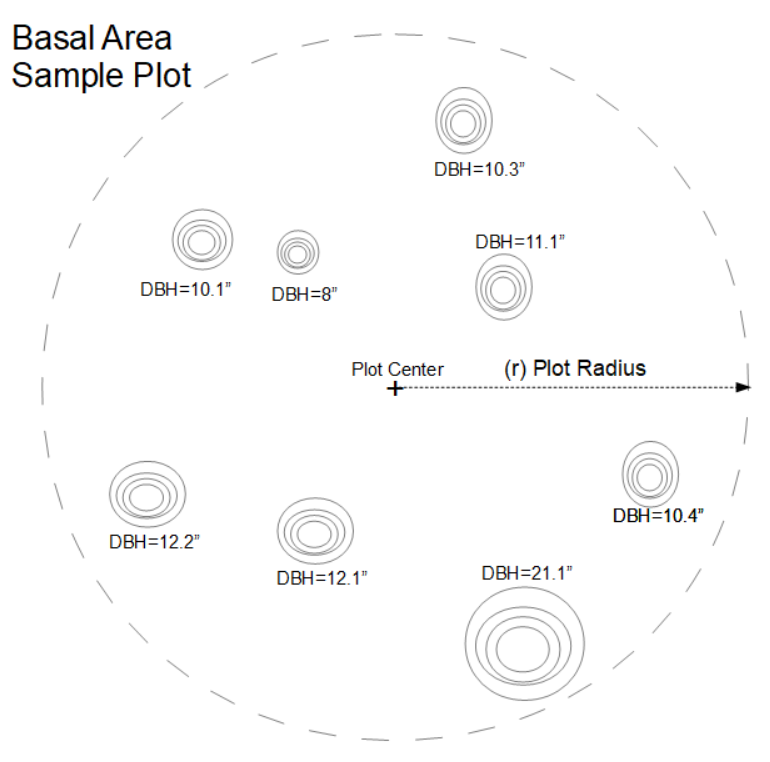The Tree Basal Area from Circumference calculator computes the basal area for a tree based on the tree's diameter at breast height.
INSTRUCTIONS: Choose units and enter the following:
- (CBH) Tree Circumference are Breast Height (~4'6" from the ground)
Tree Basal Area from Diameter (BA): The basal area is returned in square feet (ft2). The approximate diameter at breast height is also returned in inches. However, these can be automatically converted to compatible units via the pull-down menu.
The Math / Science
The basal area of a tree is a measure of the cross-sectional area of a tree trunk at breast height (typically 1.3 meters or 4.5 feet above the ground). It is commonly used in forestry to estimate the density of trees in a given area, assess forest stand structure, and calculate timber volume.
The basal area is calculated using the formula for the area of a circle:
A = π ⋅ d2/4
where:
- A = Basal Area of a tree at breast height
- d = Diameter of a tree at breast height (DBH).
Unit Conversion
Basal area is often expressed in square feet per acre (ft2/ac) and square meters per hectare (m²/ha) when assessing forest stands.
Importance in Forestry:
Basal area is used to estimate the volume of timber that can be harvested. Basal area helps in assessing the health and productivity of a forest stand. It is used in forest management practices to determine thinning and other treatments. By summing the basal areas of individual trees in a sample plot, foresters can estimate the total basal area per hectare, which is an important indicator of forest density and stand structure.
Forestry Calculators
- Tree Basal Area from Diameter: Computes the basal area of a tree based on the measurement of the tree's diameter at breast height.
- Tree Basal Area from Circumference: Computes the basal area of a tree based on the measurement of the tree's circumference at breast height.
- Basal Area per Acre: Computes the basal average per acre (ft2/ac) and basal average per hectare (m2/ha), based on samples and plot size.
- Volume of Maple Syrup from Sap: Computes the amount of maple syrup produced from an amount of sugar maple sap.
- Value of Maple Syrup Harvest: Computes the dollar amount associated with a number of sugar maple tree taps.
- Acreage Sample Ring: Compute the radius of a circle (e.g., 37 ft) where the area of the circle equates to an input area (e.g., 1/10th acre)
- Square Meters to Acres: Converts square meters to acres.
- Simple Stats: Computes the most common observational statistics (min, max, mean, sd, sum, sort etc) for a set of comma separated numbers.
